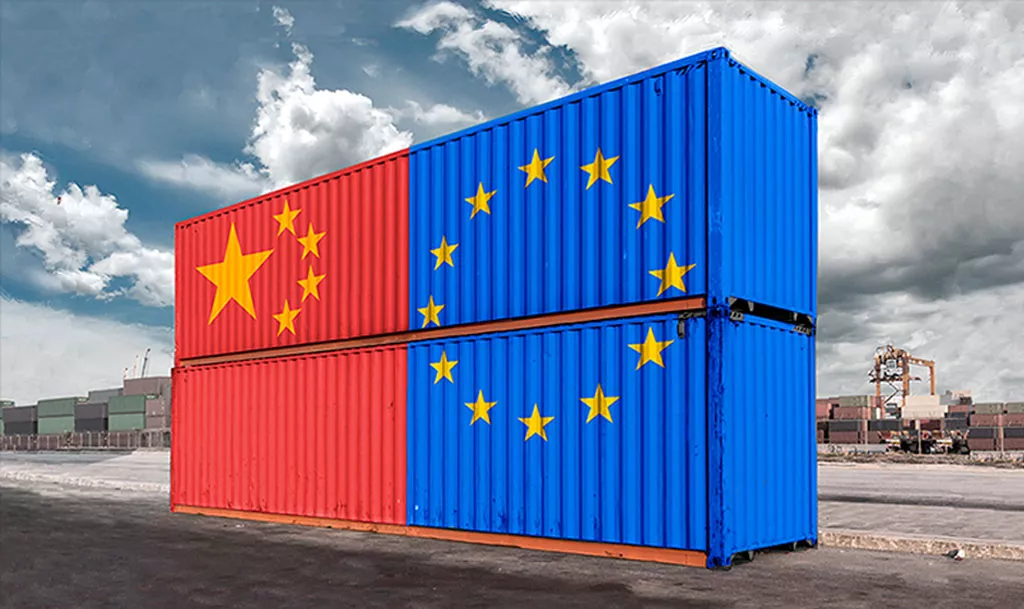- By TOP CHINA FREIGHT
- October 9, 2025
- Shipping
FCL shipping China to Europe is one of the most efficient and reliable logistics solutions for businesses moving large cargo volumes. Many importers face challenges such as fluctuating freight rates, customs complexities, and unpredictable transit times. However, by understanding how full container load (FCL) shipping works and planning your logistics strategy, you can significantly reduce costs and improve delivery reliability across Europe.

What Is FCL Shipping and How Does It Work?
FCL (Full Container Load) shipping refers to renting an entire container for your goods, whether it’s a 20ft or 40ft unit. Unlike LCL (Less than Container Load), where shipments are shared among different customers, FCL provides exclusive container use.
Advantages of FCL shipping include:
- Lower cost per unit for large shipments
- Reduced risk of cargo damage or contamination
- Faster loading, unloading, and customs clearance
- Full control over delivery schedules
Container Types Commonly Used
| Container Type | Dimensions (L×W×H) | Capacity | Ideal Cargo Type |
|---|---|---|---|
| 20ft Standard | 6.06m × 2.44m × 2.59m | 28–30 CBM | Heavy goods, dense materials |
| 40ft Standard | 12.2m × 2.44m × 2.59m | 58–60 CBM | General goods, furniture, textiles |
| 40ft High Cube | 12.2m × 2.44m × 2.89m | 65–68 CBM | Voluminous but light products |
FCL is ideal for companies importing in bulk, especially in industries like footwear, furniture, machinery, and electronics.
Why Choose FCL Shipping from China to Europe?
Choosing FCL for your China-Europe shipments offers multiple advantages in cost, efficiency, and reliability.
Key Benefits:
- Cost Efficiency: When shipping large volumes, FCL offers a lower cost per cubic meter than LCL or air freight.
- Cargo Safety: The entire container is sealed from the supplier’s factory to the destination, minimizing handling and potential damage.
- Simplified Customs: With fewer documents and inspections, customs clearance is faster and smoother.
- Stable Transit Time: FCL vessels follow fixed schedules, ensuring predictable delivery.
Moreover, FCL shipping allows for customized delivery routes and multimodal transport integration, including rail or truck delivery once the container arrives in Europe.
How Much Does FCL Shipping from China to Europe Cost?

FCL shipping costs depend on several variables, including container size, destination port, seasonal demand, and fuel surcharges.
| Container Size | Average Freight Cost | Typical Cargo Volume | Notes |
|---|---|---|---|
| 20ft Container | $1,200 – $2,000 | 28–30 CBM | Suitable for smaller bulk shipments |
| 40ft Container | $2,000 – $3,800 | 58–60 CBM | Best for large-volume goods |
| 40ft High Cube | $2,300 – $4,000 | 65–68 CBM | Extra capacity for light, bulky goods |
Additional Fees to Consider:
- Port handling charges
- Customs clearance fees
- Documentation fees
- Insurance costs
- Delivery to final warehouse (inland trucking)
While sea freight is cost-effective, planning shipments during off-peak seasons (March–May or September) can further reduce rates.
How Long Does FCL Shipping from China to Europe Take?
Transit time for FCL shipping varies depending on the origin port in China and the destination in Europe. Weather, customs, and port congestion also influence schedules.
| Route | Average Transit Time | Main Destination Ports |
|---|---|---|
| Shanghai → Hamburg | 32–35 days | Hamburg, Bremen, Rotterdam |
| Shenzhen → Rotterdam | 33–38 days | Rotterdam, Antwerp |
| Ningbo → Marseille | 35–40 days | Marseille, Genoa |
| Qingdao → Le Havre | 30–36 days | Le Havre, Felixstowe |
Overall, FCL shipments take between 30–45 days, from pick-up to final delivery. Rail freight (e.g., Yiwu–Duisburg) may shorten delivery to 18–25 days but costs slightly more.
What Documents Are Needed for FCL Shipping?

Accurate documentation ensures smooth customs clearance and prevents delays.
| Document | Description | Required By |
|---|---|---|
| Bill of Lading (B/L) | Proof of shipment and ownership | Carrier & Customs |
| Commercial Invoice | Declares cargo value and description | Customs |
| Packing List | Lists items, dimensions, and weight | Customs & Warehouse |
| Certificate of Origin | Confirms manufacturing location | Import Authorities |
| Insurance Certificate | Protects against loss or damage | Shipper |
| Import License (if needed) | For regulated goods | Import Country |
Ensuring all documents are error-free saves time and prevents unexpected demurrage or fines.
How to Choose the Right Freight Route and Port?
Selecting the correct shipping route significantly impacts costs and delivery speed.
Major Chinese Ports: Shanghai, Shenzhen, Ningbo, Qingdao, Tianjin
Main European Ports: Rotterdam, Hamburg, Antwerp, Le Havre, Genoa
Tips:
- Choose ports with regular sailings to your destination.
- Avoid small ports during peak season to reduce congestion.
- Consider intermodal rail for faster inland delivery across Europe.
For example, shipping from Shanghai to Hamburg is typically faster than from Tianjin due to higher vessel frequency.
How to Optimize Costs for FCL Shipping China to Europe?
Secure space in advance to avoid high rates during peak periods.
Fixed-rate contracts protect against seasonal fluctuations.
Use fewer but fuller containers to lower the per-unit rate.
Avoid paying for unused space by matching cargo volume.
They can negotiate better rates and manage logistics efficiently.
What Are the Main Challenges in FCL Shipping to Europe?
Although FCL shipping offers advantages, several challenges can arise:
Customs Delays:
Missing or incorrect documents can stall clearance.
Port Congestion:
European ports like Rotterdam and Hamburg often experience bottlenecks.
Fluctuating Freight Rates:
Market conditions and fuel prices influence cost.
Equipment Shortages:
Container shortages may occur during high demand seasons.
To mitigate risks, plan shipments ahead, verify documents, and maintain flexible logistics solutions such as alternative ports or routes.
Case Study: Successful FCL Shipment from China to Germany
A German retailer shipped 40ft containers of consumer electronics from Shenzhen to Hamburg. By choosing FCL and partnering with a professional freight forwarder:
- Freight costs were reduced by 15% using early booking.
- Transit time was optimized to 33 days via direct sailing.
- Customs clearance was completed within 48 hours due to complete documentation.
- Cargo reached the warehouse intact and on schedule.
This case demonstrates how strategic planning, accurate paperwork, and expert coordination can transform shipping performance.
Why Work with a Professional Freight Forwarder?
Freight forwarders handle the entire FCL shipping process from pickup to final delivery.
Their services include:
- Route and carrier selection
- Documentation and customs clearance
- Cargo insurance and warehousing
- Real-time tracking and delivery updates
Moreover, they negotiate better rates through volume-based contracts and provide end-to-end supply chain visibility. Partnering with an experienced China freight forwarder ensures smoother operations and cost efficiency.
Conclusion
In summary, FCL shipping China to Europe remains one of the most reliable and economical options for transporting large volumes. It offers predictable schedules, lower costs per unit, and enhanced cargo safety. By planning shipments strategically, ensuring proper documentation, and collaborating with a trusted freight forwarder, businesses can minimize delays and maximize profits. FCL shipping continues to play a vital role in global trade, supporting efficient supply chains between China and Europe.
Need a Shipping Quote?
If you want expert guidance and peace of mind, our team is ready to assist.
TJ China Freight offers tailored solutions to help businesses of all sizes ship more reliably from China.

FAQ
Q1: What are the main advantages of FCL shipping?
It offers cost efficiency for bulk goods, faster customs clearance, and complete control over container handling.
Q2: What documents are required for FCL shipping?
You’ll need a Bill of Lading, Commercial Invoice, Packing List, and Certificate of Origin for smooth customs clearance.
Q3: Can I mix different products in one FCL container?
Yes, as long as they comply with customs regulations and are packed safely to prevent damage.
Q4: What is the difference between FCL and LCL?
FCL gives you a full container, while LCL shares space with other shippers. FCL is faster and safer for large shipments.
Q5: How can I reduce shipping costs?
Book early, consolidate cargo, and use major ports to access better freight rates.
